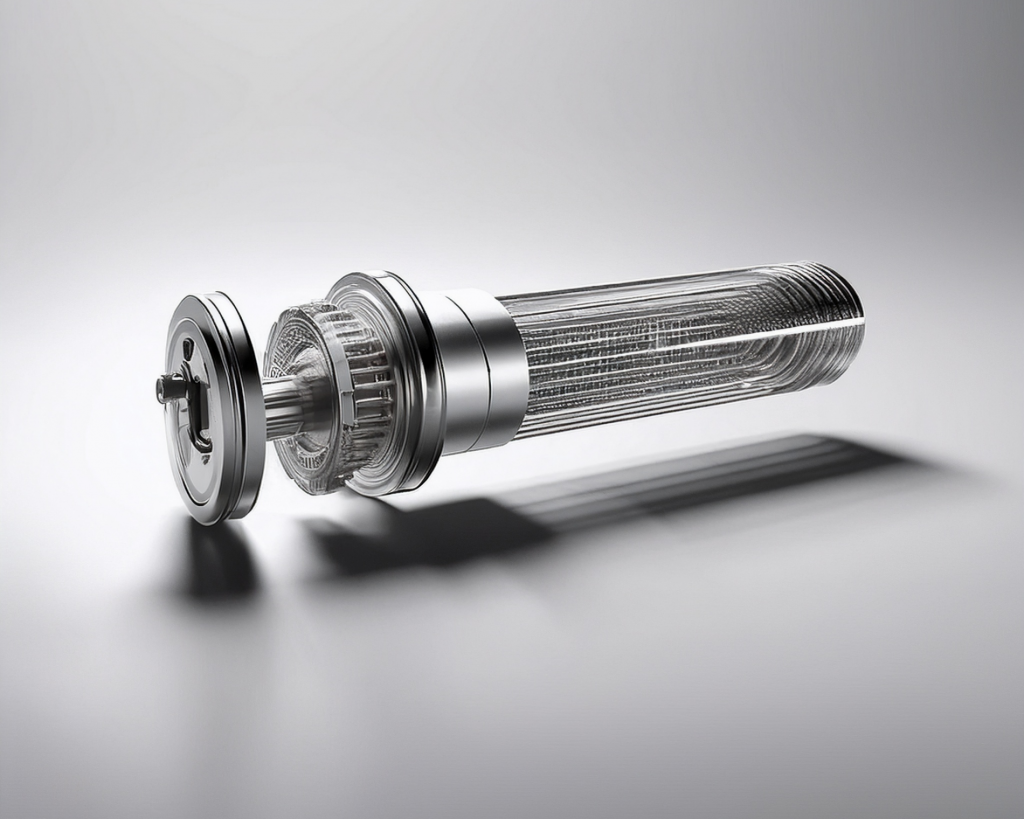What is a Tube Heat Exchanger?
A tube heat exchanger is a widely used device designed to transfer heat between two fluids without direct contact. One fluid flows inside the tubes, while the other circulates outside, allowing efficient heat exchange. These systems are highly preferred in industries such as chemical processing, energy production, food, and pharmaceuticals where temperature control is critical for safety and efficiency.
1. What is a Tubular Heat Exchanger?
What is a Tube Heat Exchanger? It is also called a tubular heat exchanger, a mechanical system that enables liquids or gases to transfer heat effectively. Among these, Shell & Tube Heat Exchangers are the most commonly used type. Their main purpose is to transfer the thermal energy of one fluid to another, making them indispensable in power plants, petrochemical facilities, and HVAC systems. They are reliable because they can withstand high pressure and temperature.
2. Working Principle of Tubular Heat Exchangers
Heat transfer in tube heat exchangers is based on convection and conduction:
Convection: One fluid moves inside the tubes while another fluid circulates outside.
Conduction (Transmission): Heat passes through the tube walls from one fluid to the other.
Depending on the design, parallel flow, counterflow, or crossflow configurations can be applied for maximum efficiency.
3. Types of Tube Heat Exchangers
When asking What is a Tube Heat Exchanger?, it is important to note that there are different structural types:
Single-Pass Heat Exchangers
Multi-Pass Heat Exchangers
U-Tube Heat Exchangers
Shell & Tube Heat Exchangers
Each type serves specific industrial needs.
4. Materials Used in Tube Heat Exchangers
The durability of a tube heat exchanger depends largely on its material. Common materials include:
Stainless Steel (corrosion resistant)
Copper (excellent thermal conductivity)
Titanium (resistant to chemicals)
Carbon Steel (affordable and durable)
5. Advantages and Disadvantages
Advantages:
High heat transfer efficiency
Resistance to high temperature and pressure
Can be manufactured from various materials
Disadvantages:
Maintenance and cleaning may be challenging
High initial investment cost
6. Applications of Tube Heat Exchangers
What is a Tube Heat Exchanger used for? It has a wide range of applications:
Power plants
Chemical industry
Food and pharmaceutical production
HVAC (heating, ventilation, cooling) systems
7. Design Criteria
The design of a tube heat exchanger directly impacts performance. Key factors include:
Heat load calculations – determining how much heat needs to be transferred
Tube diameter and length – balancing pressure drop and cost
Material selection – ensuring resistance to temperature, pressure, and chemicals
Compact design – space saving and efficiency
Ease of cleaning – access points for maintenance
8. Heat Transfer and Efficiency
Heat transfer in tube heat exchangers occurs by:
Conduction – through the tube walls
Convection – as fluids move inside/outside tubes
Radiation – at very high temperatures
Efficiency can be improved by:
Spiral/turbulence-inducing designs
Using high thermal conductivity materials
Thinner tube walls
Increasing tube surface area
9. Flow Types
Parallel Flow – fluids move in the same direction (less efficient).
Counterflow – fluids move in opposite directions (most efficient).
Cross Flow – fluids flow perpendicularly (common in air/gas systems).
10. Selection Criteria
When deciding What is a Tube Heat Exchanger best suited for?, consider:
Application area (industry, HVAC, energy, chemicals)
Operating temperature and pressure
Material durability
Heat transfer efficiency
Maintenance requirements
11. Installation
Steps for proper installation include:
Selecting a suitable location
Ensuring correct inlet/outlet connections
Inspecting gaskets and flanges
Performing leak tests
Starting full-capacity operation
12. Maintenance & Cleaning
Without maintenance, tube heat exchangers lose efficiency due to scaling or corrosion. Cleaning methods:
Chemical Cleaning – dissolving deposits with chemicals
Mechanical Cleaning – brushes or high-pressure water
Anti-corrosion coatings
Filtration systems to prevent clogging
13. Common Problems
Leaks – from seals or damaged tubes
Blockages – due to scale or sediment buildup
Corrosion – caused by aggressive fluids
Overheating – if circulation is poor
14. Future & Innovations
The future of tube heat exchangers focuses on:
Nanotechnology – enhancing heat transfer
IoT-based sensors – real-time monitoring
Energy recovery systems – reducing costs and increasing sustainability
FAQ – What is a Tube Heat Exchanger?
What is the lifespan of a tube heat exchanger?
With proper maintenance, 20–30 years.
What is the best material?
Stainless steel and titanium for corrosion resistance.
How to clean it?
Using chemical or mechanical cleaning methods periodically.
Where are tube heat exchangers used?
In power plants, chemical facilities, food industry, and HVAC systems.


